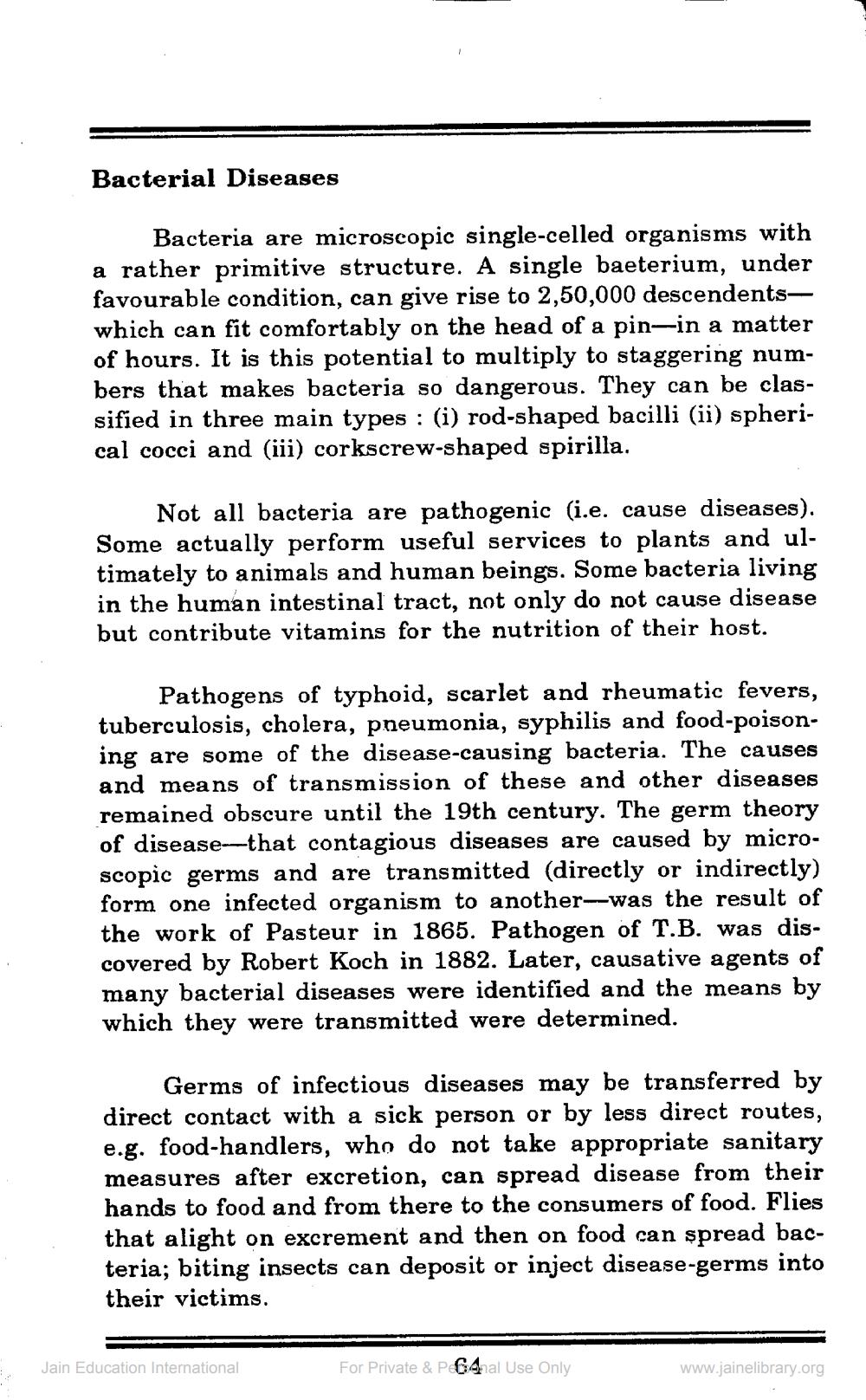________________
Bacterial Diseases
Bacteria are microscopic single-celled organisms with a rather primitive structure. A single baeterium, under favourable condition, can give rise to 2,50,000 descendentswhich can fit comfortably on the head of a pin-in a matter of hours. It is this potential to multiply to staggering numbers that makes bacteria so dangerous. They can be classified in three main types : (i) rod-shaped bacilli (ii) spherical cocci and (iii) corkscrew-shaped spirilla.
Not all bacteria are pathogenic (i.e. cause diseases). Some actually perform useful services to plants and ultimately to animals and human beings. Some bacteria living in the human intestinal tract, not only do not cause disease but contribute vitamins for the nutrition of their host.
Pathogens of typhoid, scarlet and rheumatic fevers, tuberculosis, cholera, pneumonia, syphilis and food-poisoning are some of the disease-causing bacteria. The causes and means of transmission of these and other diseases remained obscure until the 19th century. The germ theory of disease--that contagious diseases are caused by microscopic germs and are transmitted (directly or indirectly) form one infected organism to another--was the result of the work of Pasteur in 1865. Pathogen of T.B. was discovered by Robert Koch in 1882. Later, causative agents of many bacterial diseases were identified and the means by which they were transmitted were determined.
Germs of infectious diseases may be transferred by direct contact with a sick person or by less direct routes, e.g. food-handlers, who do not take appropriate sanitary measures after excretion, can spread disease from their hands to food and from there to the consumers of food. Flies that alight on excrement and then on food can spread bacteria; biting insects can deposit or inject disease-germs into their victims.
Jain Education International
For Private & P64nal Use Only
www.jainelibrary.org




